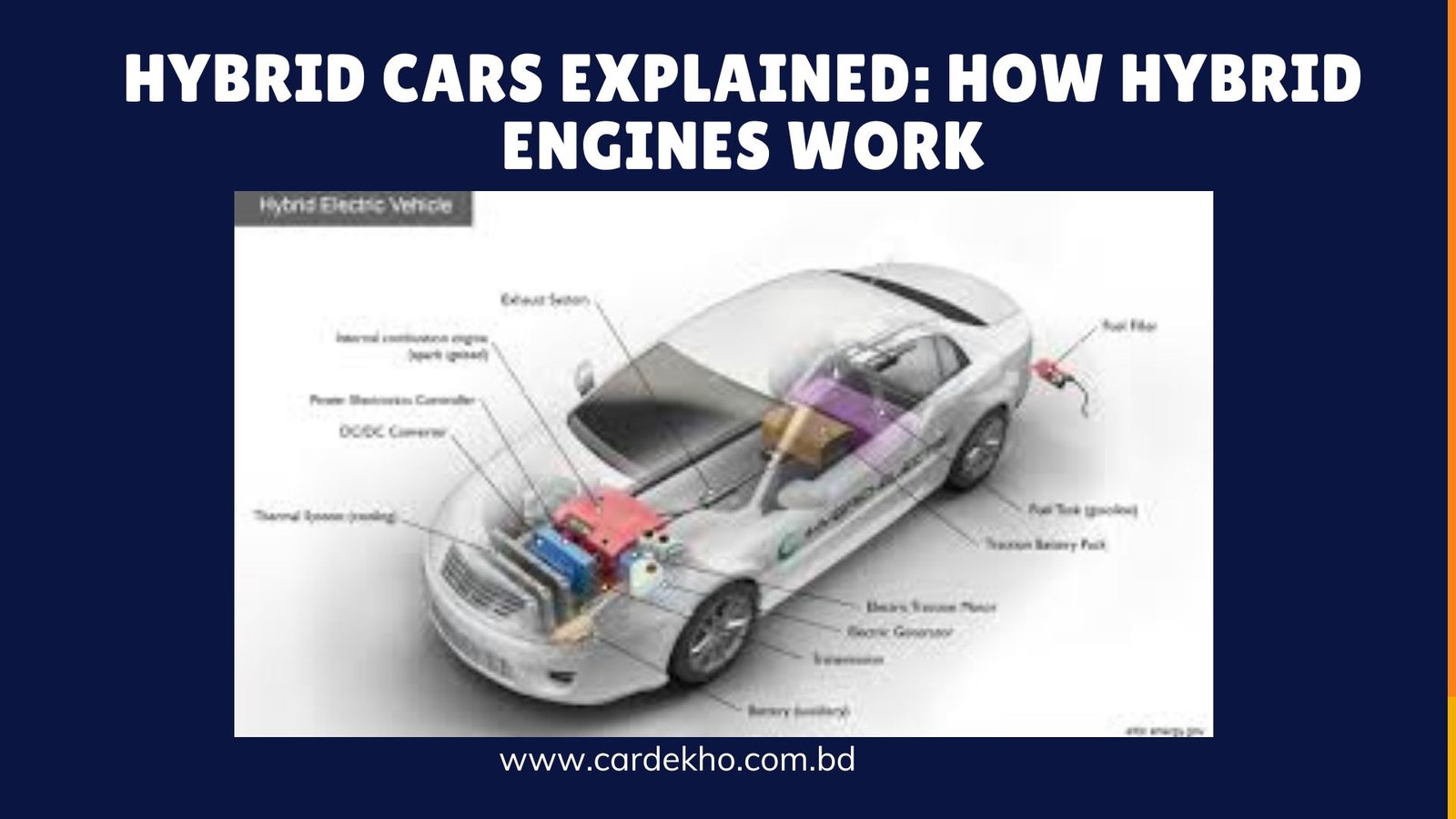With the growing emphasis on fuel efficiency and environmental sustainability, hybrid cars have become an attractive option for many car buyers. These vehicles combine traditional internal combustion engines (ICE) with electric motors to improve fuel economy and reduce emissions. In this article, we will explore how hybrid engines work, their benefits, and their different types.
What is a Hybrid Car?
A hybrid car is a vehicle that uses two power sources: a gasoline (or diesel) engine and an electric motor. These two systems work together to enhance efficiency, reduce fuel consumption, and minimize emissions. Hybrid vehicles intelligently switch between or combine these power sources depending on driving conditions.
How Hybrid Engines Work
Hybrid engines operate using a combination of the following key components:
1. Internal Combustion Engine (ICE)
- The conventional gasoline or diesel engine serves as one of the primary power sources.
- Works efficiently at higher speeds or when additional power is needed.
2. Electric Motor
- Assists the ICE during acceleration and low-speed driving.
- In some hybrid cars, the electric motor can operate independently for short distances.
3. Battery Pack
- Stores electrical energy to power the electric motor.
- Gets recharged through regenerative braking and, in some cases, via external charging.
4. Regenerative Braking System
- Converts kinetic energy lost during braking into electrical energy.
- Stores this energy in the battery for later use.
5. Power Control Unit (PCU)
- Manages the power distribution between the ICE, electric motor, and battery.
- Optimizes energy efficiency based on driving conditions.
Types of Hybrid Vehicles
1. Parallel Hybrid
- The electric motor and ICE work together to power the wheels.
- The most common type found in models like the Toyota Prius and Honda Insight.
- Uses regenerative braking to recharge the battery.
2. Series Hybrid
- The ICE acts as a generator to charge the battery, which powers the electric motor.
- The electric motor is the sole source of propulsion, providing smoother and more efficient driving.
- Example: BMW i3 (with range extender).
3. Plug-in Hybrid (PHEV)
- Features a larger battery that can be charged externally using an electric outlet.
- Offers an extended all-electric range before switching to ICE.
- Example: Mitsubishi Outlander PHEV, Toyota Prius Prime.
4. Mild Hybrid
- Uses a small electric motor to assist the ICE but cannot run solely on electric power.
- Provides improved fuel efficiency but relies primarily on the combustion engine.
- Example: Suzuki Swift Hybrid, Honda City e:HEV.
Advantages of Hybrid Cars
- ✅ Improved Fuel Efficiency – Reduces dependency on fossil fuels and lowers fuel costs.
- ✅ Lower Emissions – Produces fewer greenhouse gases compared to conventional ICE vehicles.
- ✅ Smooth Driving Experience – The electric motor provides silent operation and smooth acceleration.
- ✅ Regenerative Braking – Recovers energy that would otherwise be wasted, increasing efficiency.
- ✅ Government Incentives – Many countries offer tax benefits and incentives for hybrid car buyers.
Challenges of Hybrid Cars
- ❌ Higher Initial Cost – Hybrid vehicles tend to be more expensive than conventional cars.
- ❌ Battery Replacement Cost – Hybrid battery packs may need replacement after several years.
- ❌ Limited Electric-Only Range – Most hybrids still rely on gasoline for longer trips.
- ❌ Complex Maintenance – Requires specialized servicing for hybrid components.
Conclusion
Hybrid cars offer a balance between conventional fuel-powered vehicles and fully electric cars. They provide better fuel efficiency, lower emissions, and a smooth driving experience. However, they also come with some challenges, such as higher upfront costs and potential battery replacement expenses. If you’re looking for an eco-friendly and cost-effective vehicle, a hybrid car might be the perfect choice for you.

